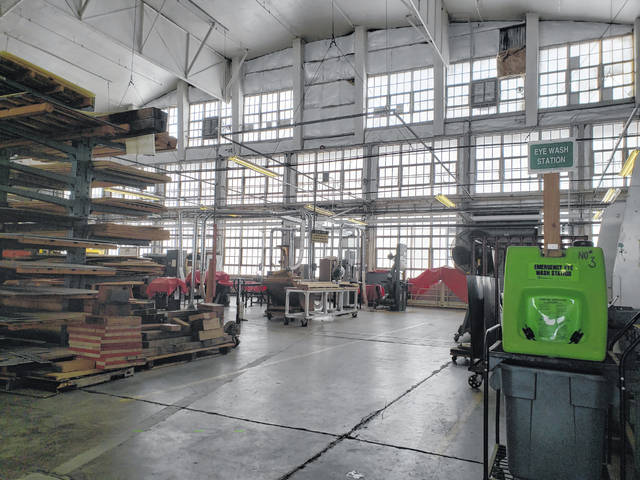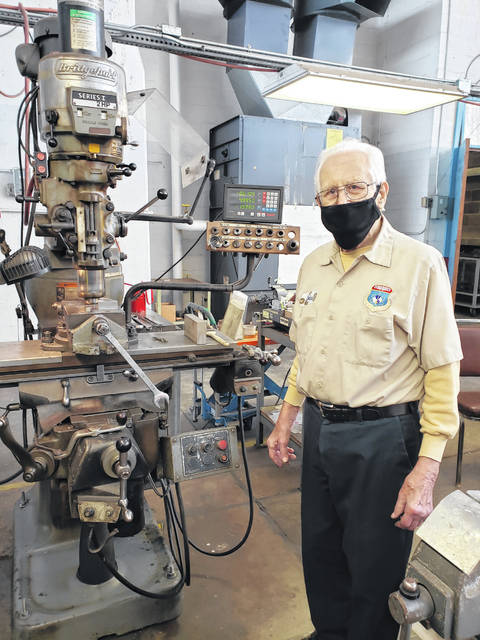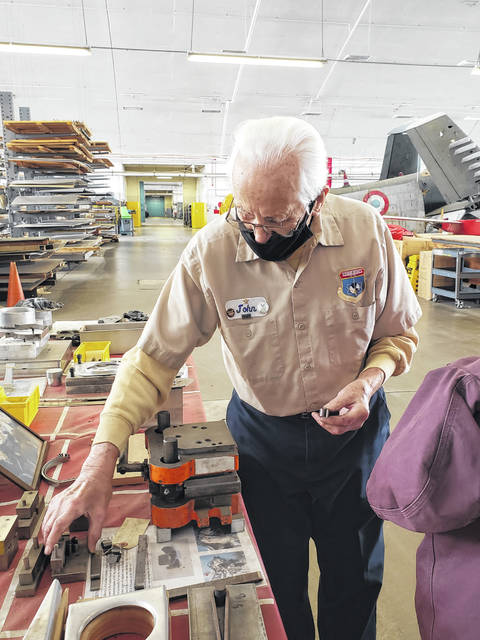


WRIGHT-PATTERSON AIR FORCE BASE — Once a week, John Rumpf comes to work in the machine shop at the restoration hangar of the National Museum of the US Air Force. His job: crafting teeny tiny parts, which will be used to restore the historical aircraft in the museum’s care.
Rumpf is a 93-year-old toolmaker, a master craftsman and fulfills one of the most important jobs in the entire restoration process: recreating the smallest of aircraft components, the manufacturing processes of which have been lost to time.
Rumpf has been volunteering in the shop for 22 years, coming in two days a week. Lately he has reduced his time at the shop to once a week. During the COVID-19 lockdown, he spent several months out of the shop but has since returned.
On Thursday, Feb. 11, he is working on creating about two dozen of a spring-loaded clip. These tiny clips are installed in aircraft doors to prevent them from slamming shut. These springs are so small and simple that it doesn’t justify creating a die, he said. Instead, the 93-year-old creates them on his own, using only his hands, his machinery and the knowledge he’s gained.
“He gets to work and doesn’t know what it’s for,” said Lead Restoration Specialist Casey Simmons. “He’ll take it and it’ll come out perfect. It’ll come out exactly like it. “We say, ‘Hey John, make this.’ And he does it. Every single time.”
Hundreds of aircraft have passed through the restoration hangar. Completing these restorations requires lots of tiny parts, many of which aren’t produced and haven’t been manufactured for decades. Rumpf has the ability to take an old, worn out, ragged, rusted piece of machinery, and replicate it with a master’s precision.
“As a toolmaker, you have the ability to see how to bend and how to form things,” he said. “They’ll bring a rusted old piece and say, ‘can you make this?’ then I look at it and start forming it.”
Rumpf has created and recreated hundreds of parts for the airplanes that are restored at the hangar. An extraordinary amount of time and skill is required in order to correctly replicate nearly-century old machinery. When necessary, Rumpf will create his own dies to stamp the metal into proper form. He repeats this painstaking creation process over and over, sometimes in order to make only a single component.
“I had to develop this. And keep doing it because when it formed it changed a little bit,” Rumpf said, pointing out one of the dies he’s created. “Once the part is created, and maybe the construction only needs one or two, it’s not needed anymore.”
“We try learning everything we can from him,” Simmons said.
Rumpf was born and raised in Austria, and tells his story with a lilting Austrian accent. When he was younger, Rumpf wanted to be a locomotive engineer. In order to do so, he had to learn to become a machinist. However, at the end of World War II, he changed his profession and switched over to become a toolmaker.
“At the time there was no plastic, so we made everything out of sheet metal and wire,” Rumpf said. “People don’t realize how many things are made out of wire.
“This,” he said, holding up a small screw, “was once wire.”
Rumpf’s wife was displaced by the second World War. However, Rumpf was not. As such the United States wouldn’t accept him into the country. Instead, the two lived in Canada for six years, from 1954 until 1960, when they were finally able to immigrate to the United States.
“The Canadians took us in like hotcakes,” he joked.
Rumpf has no plans to retire from his work, and says he enjoys it more than sitting at home all day.
“Some people working here say ‘you cannot do this anymore,’ ” he said.
“Wasn’t me, John!” Simmons joked from across the room.
“I like working,” Rumpf continued, chuckling. “It keeps my mind going.”




